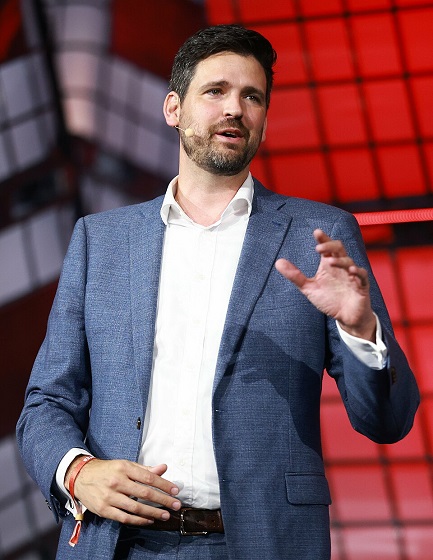Brownstone Institute
Unrest in Britain: The Other Half of the Story

From the Brownstone Institute
By
The official story circulating on BBC and echoed by government and police spokespersons is that the riots and unrest seen in the UK in recent weeks are the product of a tiny minority of “far-right” hooligans and criminals, egged on by “disinformation” about the circumstances of the awful murder of innocent children in Southport, in particular the identity of the 17-year-old assailant, who was initially alleged to be a Muslim refugee, and later turned out to be a Welsh-born citizen born to Rwandan parents. This official story is not, strictly speaking, false. But it is only half the story.
The race riots, street violence, and public unrest we have seen in recent weeks have complex underlying causes and are not susceptible to any simple, one-dimensional explanation. Yet in their eagerness to condemn “far-right” rioters and looters, many public commentators omit to mention that the visceral anger of the rioters is really just an extreme and unlawful expression of the anger and frustration of many ordinary, law-abiding citizens, whose concerns about immigration and its impact on their communities are usually either ignored or blithely dismissed as “disinformation” or “far-right” propaganda.
Don’t get me wrong: I’m not suggesting for a second that it is in any way justified to hurl rocks at a mosque, injure police officers, set refugee accommodation centres on fire, engage in disorderly conduct, or intimidate people of other religions or ethnicities. I’m not suggesting for a second that anti-immigrant violence should be tolerated or encouraged.
But I would suggest that the condemnation of “far-right” agitation and violence should not lead us to overlook the broader societal discontent and fragmentation that such violence emerges from. Our condemnation of far-right violence should not be allowed to blind us to the fact that a very large proportion of citizens who express disquiet over immigration policy, or attend public rallies to raise awareness of their concerns, are not violent thugs, or “far-right” agitators; just regular, law-abiding citizens who are worried about how poorly controlled immigration will impact their access to housing and public services, or the safety of their streets, or the cohesion and prosperity of their neighbourhoods.
If deep discontent with the UK’s immigration policy was restricted to “far-right” hooligans, we could not explain the remarkable success of the Brexit movement, one of whose primary selling points was its opposition to “mass immigration,” which saw through a successful Brexit referendum in 2016. Nor could we explain the fact that in the 2024 elections, Nigel Farage’s Reform Party, with its call for stricter controls on immigration, managed to win 15% of the popular vote, in a first-past-the-post system in which many of the Reform voters knew they were likely handing the election to Labour.
Of course, it is psychologically comforting to blame a social problem on a single scapegoat. It makes you feel more comfortable because the problem is contained and limited to whomever you have chosen to scapegoat – be it those pesky refugees, or the Muslims, or the Jews, or the conservative hillbillies, or the “Far Right.” But it may also be myopic, if the problem happens to be a complex one, with multiple underlying causes.
Those who, in the face of growing unrest surrounding immigration and race, limit themselves to condemning far=right violence, are missing out on a golden opportunity to open a sophisticated public conversation about fragmented communities across the UK, about the real and perceived failures of immigration policy, and about the reasons why immigration remains such a “hot button issue” in towns and cities across Britain.
Public disquiet in the UK over immigration policy is real and goes far beyond “far-right” agitation. Even when that disquiet is not on the front pages of British newspapers, it continues to bubble under the surface, as some communities feel that their access to public services and housing, as well as the future of their way of life, are threatened by disproportionate levels of immigration, including illegal immigration.
According to a 2023 analysis of professional opinion polls undertaken by the Migration Observatory, 37% of Britons believe immigration should be reduced “a lot,” and 15% believe it should be reduced “a little,” compared with 6% who believe it should be increased “a lot” and 8% who think it should be increased “a little.” In short, over half of the population believe there is too much immigration, while more than one in three believe there is far too much immigration.
The superficiality of the “official” British response to the unfolding unrest may come down to a sort of wishful thinking: if we just keep the focus on the “far right,” then we can just round up the culprits, pack our bags, and go home. After all, what politician or head of police wants to grasp the nettle of a racially charged issue like immigration, in a way that seriously engages with the demands of disgruntled citizens and communities?
Nevertheless, until public authorities and opinion leaders start to respectfully engage with citizens who believe illegal immigration is out of control, as well as communities that worry over the impact of immigration on social cohesion, housing, public services, and public finances, the disquiet and resentment will continue to brew. Sadly, we can expect more unrest and disorder if public authorities do not engage in a respectful way with citizens’ legitimate fears and concerns.
Republished from the author’s Substack
Brownstone Institute
Bizarre Decisions about Nicotine Pouches Lead to the Wrong Products on Shelves

From the Brownstone Institute
A walk through a dozen convenience stores in Montgomery County, Pennsylvania, says a lot about how US nicotine policy actually works. Only about one in eight nicotine-pouch products for sale is legal. The rest are unauthorized—but they’re not all the same. Some are brightly branded, with uncertain ingredients, not approved by any Western regulator, and clearly aimed at impulse buyers. Others—like Sweden’s NOAT—are the opposite: muted, well-made, adult-oriented, and already approved for sale in Europe.
Yet in the United States, NOAT has been told to stop selling. In September 2025, the Food and Drug Administration (FDA) issued the company a warning letter for offering nicotine pouches without marketing authorization. That might make sense if the products were dangerous, but they appear to be among the safest on the market: mild flavors, low nicotine levels, and recyclable paper packaging. In Europe, regulators consider them acceptable. In America, they’re banned. The decision looks, at best, strange—and possibly arbitrary.
What the Market Shows
My October 2025 audit was straightforward. I visited twelve stores and recorded every distinct pouch product visible for sale at the counter. If the item matched one of the twenty ZYN products that the FDA authorized in January, it was counted as legal. Everything else was counted as illegal.
Two of the stores told me they had recently received FDA letters and had already removed most illegal stock. The other ten stores were still dominated by unauthorized products—more than 93 percent of what was on display. Across all twelve locations, about 12 percent of products were legal ZYN, and about 88 percent were not.
The illegal share wasn’t uniform. Many of the unauthorized products were clearly high-nicotine imports with flashy names like Loop, Velo, and Zimo. These products may be fine, but some are probably high in contaminants, and a few often with very high nicotine levels. Others were subdued, plainly meant for adult users. NOAT was a good example of that second group: simple packaging, oat-based filler, restrained flavoring, and branding that makes no effort to look “cool.” It’s the kind of product any regulator serious about harm reduction would welcome.
Enforcement Works
To the FDA’s credit, enforcement does make a difference. The two stores that received official letters quickly pulled their illegal stock. That mirrors the agency’s broader efforts this year: new import alerts to detain unauthorized tobacco products at the border (see also Import Alert 98-06), and hundreds of warning letters to retailers, importers, and distributors.
But effective enforcement can’t solve a supply problem. The list of legal nicotine-pouch products is still extremely short—only a narrow range of ZYN items. Adults who want more variety, or stores that want to meet that demand, inevitably turn to gray-market suppliers. The more limited the legal catalog, the more the illegal market thrives.
Why the NOAT Decision Appears Bizarre
The FDA’s own actions make the situation hard to explain. In January 2025, it authorized twenty ZYN products after finding that they contained far fewer harmful chemicals than cigarettes and could help adult smokers switch. That was progress. But nine months later, the FDA has approved nothing else—while sending a warning letter to NOAT, arguably the least youth-oriented pouch line in the world.
The outcome is bad for legal sellers and public health. ZYN is legal; a handful of clearly risky, high-nicotine imports continue to circulate; and a mild, adult-market brand that meets European safety and labeling rules is banned. Officially, NOAT’s problem is procedural—it lacks a marketing order. But in practical terms, the FDA is punishing the very design choices it claims to value: simplicity, low appeal to minors, and clean ingredients.
This approach also ignores the differences in actual risk. Studies consistently show that nicotine pouches have far fewer toxins than cigarettes and far less variability than many vapes. The biggest pouch concerns are uneven nicotine levels and occasional traces of tobacco-specific nitrosamines, depending on manufacturing quality. The serious contamination issues—heavy metals and inconsistent dosage—belong mostly to disposable vapes, particularly the flood of unregulated imports from China. Treating all “unauthorized” products as equally bad blurs those distinctions and undermines proportional enforcement.
A Better Balance: Enforce Upstream, Widen the Legal Path
My small Montgomery County survey suggests a simple formula for improvement.
First, keep enforcement targeted and focused on suppliers, not just clerks. Warning letters clearly change behavior at the store level, but the biggest impact will come from auditing distributors and importers, and stopping bad shipments before they reach retail shelves.
Second, make compliance easy. A single-page list of authorized nicotine-pouch products—currently the twenty approved ZYN items—should be posted in every store and attached to distributor invoices. Point-of-sale systems can block barcodes for anything not on the list, and retailers could affirm, once a year, that they stock only approved items.
Third, widen the legal lane. The FDA launched a pilot program in September 2025 to speed review of new pouch applications. That program should spell out exactly what evidence is needed—chemical data, toxicology, nicotine release rates, and behavioral studies—and make timely decisions. If products like NOAT meet those standards, they should be authorized quickly. Legal competition among adult-oriented brands will crowd out the sketchy imports far faster than enforcement alone.
The Bottom Line
Enforcement matters, and the data show it works—where it happens. But the legal market is too narrow to protect consumers or encourage innovation. The current regime leaves a few ZYN products as lonely legal islands in a sea of gray-market pouches that range from sensible to reckless.
The FDA’s treatment of NOAT stands out as a case study in inconsistency: a quiet, adult-focused brand approved in Europe yet effectively banned in the US, while flashier and riskier options continue to slip through. That’s not a public-health victory; it’s a missed opportunity.
If the goal is to help adult smokers move to lower-risk products while keeping youth use low, the path forward is clear: enforce smartly, make compliance easy, and give good products a fair shot. Right now, we’re doing the first part well—but failing at the second and third. It’s time to fix that.
Addictions
The War on Commonsense Nicotine Regulation

From the Brownstone Institute
Cigarettes kill nearly half a million Americans each year. Everyone knows it, including the Food and Drug Administration. Yet while the most lethal nicotine product remains on sale in every gas station, the FDA continues to block or delay far safer alternatives.
Nicotine pouches—small, smokeless packets tucked under the lip—deliver nicotine without burning tobacco. They eliminate the tar, carbon monoxide, and carcinogens that make cigarettes so deadly. The logic of harm reduction couldn’t be clearer: if smokers can get nicotine without smoke, millions of lives could be saved.
Sweden has already proven the point. Through widespread use of snus and nicotine pouches, the country has cut daily smoking to about 5 percent, the lowest rate in Europe. Lung-cancer deaths are less than half the continental average. This “Swedish Experience” shows that when adults are given safer options, they switch voluntarily—no prohibition required.
In the United States, however, the FDA’s tobacco division has turned this logic on its head. Since Congress gave it sweeping authority in 2009, the agency has demanded that every new product undergo a Premarket Tobacco Product Application, or PMTA, proving it is “appropriate for the protection of public health.” That sounds reasonable until you see how the process works.
Manufacturers must spend millions on speculative modeling about how their products might affect every segment of society—smokers, nonsmokers, youth, and future generations—before they can even reach the market. Unsurprisingly, almost all PMTAs have been denied or shelved. Reduced-risk products sit in limbo while Marlboros and Newports remain untouched.
Only this January did the agency relent slightly, authorizing 20 ZYN nicotine-pouch products made by Swedish Match, now owned by Philip Morris. The FDA admitted the obvious: “The data show that these specific products are appropriate for the protection of public health.” The toxic-chemical levels were far lower than in cigarettes, and adult smokers were more likely to switch than teens were to start.
The decision should have been a turning point. Instead, it exposed the double standard. Other pouch makers—especially smaller firms from Sweden and the US, such as NOAT—remain locked out of the legal market even when their products meet the same technical standards.
The FDA’s inaction has created a black market dominated by unregulated imports, many from China. According to my own research, roughly 85 percent of pouches now sold in convenience stores are technically illegal.
The agency claims that this heavy-handed approach protects kids. But youth pouch use in the US remains very low—about 1.5 percent of high-school students according to the latest National Youth Tobacco Survey—while nearly 30 million American adults still smoke. Denying safer products to millions of addicted adults because a tiny fraction of teens might experiment is the opposite of public-health logic.
There’s a better path. The FDA should base its decisions on science, not fear. If a product dramatically reduces exposure to harmful chemicals, meets strict packaging and marketing standards, and enforces Tobacco 21 age verification, it should be allowed on the market. Population-level effects can be monitored afterward through real-world data on switching and youth use. That’s how drug and vaccine regulation already works.
Sweden’s evidence shows the results of a pragmatic approach: a near-smoke-free society achieved through consumer choice, not coercion. The FDA’s own approval of ZYN proves that such products can meet its legal standard for protecting public health. The next step is consistency—apply the same rules to everyone.
Combustion, not nicotine, is the killer. Until the FDA acts on that simple truth, it will keep protecting the cigarette industry it was supposed to regulate.
-

 Daily Caller2 days ago
Daily Caller2 days agoUS Eating Canada’s Lunch While Liberals Stall – Trump Admin Announces Record-Shattering Energy Report
-

 Business2 days ago
Business2 days agoThe Liberal budget is a massive FAILURE: Former Liberal Cabinet Member Dan McTeague
-

 COVID-192 days ago
COVID-192 days agoFreedom Convoy leader Tamara Lich to appeal her recent conviction
-

 Business2 days ago
Business2 days agoCarney’s budget spares tax status of Canadian churches, pro-life groups after backlash
-

 Justice2 days ago
Justice2 days agoCarney government lets Supreme Court decision stand despite outrage over child porn ruling
-

 espionage1 day ago
espionage1 day agoU.S. Charges Three More Chinese Scholars in Wuhan Bio-Smuggling Case, Citing Pattern of Foreign Exploitation in American Research Labs
-

 Business20 hours ago
Business20 hours agoCarney budget doubles down on Trudeau-era policies
-

 Daily Caller1 day ago
Daily Caller1 day agoUN Chief Rages Against Dying Of Climate Alarm Light











